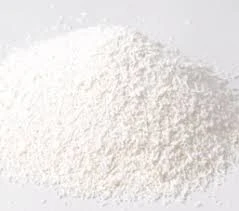
muriate of potash fertilizer
The Importance of Muriate of Potash Fertilizer in Agriculture
Muriate of potash (MOP), scientifically known as potassium chloride (KCl), is one of the most widely used fertilizers in agriculture today. In light of the growing global population and the increasing demand for food production, the role of MOP in enhancing crop yields and improving soil health has become more significant than ever. This article delves into the composition, benefits, application methods, and environmental considerations associated with muriate of potash.
Composition and Nutritional Value
Muriate of potash is primarily composed of potassium, an essential nutrient for plant growth. Potassium accounts for approximately 60% of the composition of MOP, making it an excellent source for this vital macronutrient. Potassium plays several critical roles in plant physiology, including regulating water uptake, activating enzymes, and promoting photosynthesis. Moreover, it enhances the plant's resistance to diseases and environmental stress, including drought and extreme temperatures.
Benefits of Muriate of Potash
The use of MOP offers several advantages to farmers and agricultural producers
1. Improved Crop Yield Numerous studies have demonstrated that potassium enhances the overall productivity of crops. By facilitating better nutrient absorption, MOP can lead to substantial increases in yields for staple crops such as wheat, maize, and rice.
2. Enhanced Quality of Produce The application of muriate of potash is linked to improved quality in fruits and vegetables. Higher potassium levels in crops can result in better flavor, increased resistance to bruising, and extended shelf-life, all of which are beneficial for both producers and consumers.
3. Soil Health MOP contributes positively to soil health by promoting the development of beneficial microbial populations. Healthy soil microflora can improve nutrient cycling and organic matter decomposition, which are crucial for sustainable agricultural practices.
4. Drought Resistance Potassium is essential for maintaining turgor pressure in plant cells, which is critical during dry periods. The use of MOP can enhance a plant's ability to withstand drought conditions, making it an invaluable resource in areas prone to water scarcity.
muriate of potash fertilizer

Application Methods
Muriate of potash is versatile in its application and can be used in several ways, depending on the specific needs of the crop and soil conditions
1. Broadcasting This method involves spreading MOP evenly over the field surface. It is commonly used before planting or during the early growth stages.
2. Banding In this technique, MOP is placed in bands alongside or below the seed at planting. Banding can enhance nutrient uptake by ensuring that the potassium is available in the root zone where it is needed most.
3. Foliar Application In some cases, MOP can be applied as a foliar spray to address specific nutrient deficiencies during the growing season. This method allows for quick absorption and rapid correction of deficiencies.
Environmental Considerations
While muriate of potash has many benefits, it is vital to use it judiciously to minimize potential environmental impacts. Overapplication can lead to nutrient runoff, contributing to water pollution and eutrophication in nearby water bodies. Sustainable agricultural practices, such as soil testing and precision fertilization, should be employed to optimize the use of MOP while ensuring minimal environmental damage.
Conclusion
In conclusion, muriate of potash plays a pivotal role in modern agriculture by providing essential potassium, which enhances crop yield and quality while promoting soil health. As farmers face the challenges of climate change and the need for sustainable practices, MOP remains an important tool in the agricultural toolkit. By understanding and utilizing this valuable fertilizer responsibly, we can secure a more productive and sustainable agricultural future for generations to come.
-
Understanding Synthetic Rubber OptionsNewsApr.27,2025
-
Trichloroisocyanuric Acid: Essential for Clean and Safe WaterNewsApr.27,2025
-
Sodium Dichloroisocyanurate: Key to Safe Water TreatmentNewsApr.27,2025
-
Sodium Acid Pyrophosphate: Essential in Modern Food ProcessingNewsApr.27,2025
-
Essential Water Treatment ChemicalsNewsApr.27,2025
-
Denatured Alcohol and Its Industrial UsesNewsApr.27,2025
-
The Versatile Uses of Sodium BicarbonateNewsApr.24,2025
Hebei Tenger Chemical Technology Co., Ltd. focuses on the chemical industry and is committed to the export service of chemical raw materials.
-

view more DiethanolisopropanolamineIn the ever-growing field of chemical solutions, diethanolisopropanolamine (DEIPA) stands out as a versatile and important compound. Due to its unique chemical structure and properties, DEIPA is of interest to various industries including construction, personal care, and agriculture. -

view more TriisopropanolamineTriisopropanolamine (TIPA) alkanol amine substance, is a kind of alcohol amine compound with amino and alcohol hydroxyl, and because of its molecules contains both amino and hydroxyl. -

view more Tetramethyl Thiuram DisulfideTetramethyl thiuram disulfide, also known as TMTD, is a white to light-yellow powder with a distinct sulfur-like odor. It is soluble in organic solvents such as benzene, acetone, and ethyl acetate, making it highly versatile for use in different formulations. TMTD is known for its excellent vulcanization acceleration properties, which makes it a key ingredient in the production of rubber products. Additionally, it acts as an effective fungicide and bactericide, making it valuable in agricultural applications. Its high purity and stability ensure consistent performance, making it a preferred choice for manufacturers across various industries.











